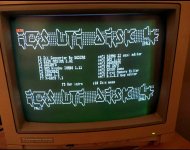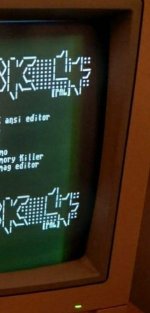Hello again to all,
another 1084S, this time model D1 (Daewoo chassis).
This monitor was turned off for several years and stored in a very humid cellar in Germany. I bought it for 50 euros. When it arrived I cleaned the inside thoroughly, removing dust and dirt and all the electrolytic capacitors were replaced. The monitor works very well and can be seen very well with a signal coming from the C64, but with an AMIGA in RGB, or without any input signal, the right part of the raster seems narrowed by about 1.5 cm, but it is strange that with AMIGA, despite being narrow, the image is still displayed completely, even with the C64 screen in the photo you can see it very well. It seems that this is only noticeable with very dark images. What do you think could this depend on? Voltages or some other component blown?
Emanuele
another 1084S, this time model D1 (Daewoo chassis).
This monitor was turned off for several years and stored in a very humid cellar in Germany. I bought it for 50 euros. When it arrived I cleaned the inside thoroughly, removing dust and dirt and all the electrolytic capacitors were replaced. The monitor works very well and can be seen very well with a signal coming from the C64, but with an AMIGA in RGB, or without any input signal, the right part of the raster seems narrowed by about 1.5 cm, but it is strange that with AMIGA, despite being narrow, the image is still displayed completely, even with the C64 screen in the photo you can see it very well. It seems that this is only noticeable with very dark images. What do you think could this depend on? Voltages or some other component blown?
Emanuele





